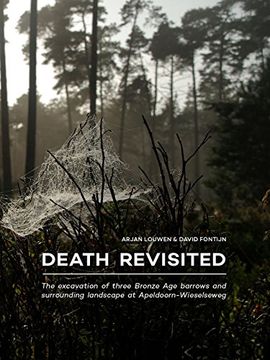Share
Death Revisited: The Excavation of Three Bronze Age Barrows and Surrounding Landscape at Apeldoorn-Wieselseweg (in English)
David Fontijn
(Author)
·
Arjan Louwen
(Author)
·
Sidestone Press
· Paperback
Death Revisited: The Excavation of Three Bronze Age Barrows and Surrounding Landscape at Apeldoorn-Wieselseweg (in English) - Louwen, Arjan ; Fontijn, David
$ 56.71
$ 59.85
You save: $ 3.14
Choose the list to add your product or create one New List
✓ Product added successfully to the Wishlist.
Go to My WishlistsIt will be shipped from our warehouse between
Tuesday, June 18 and
Thursday, June 20.
You will receive it anywhere in United States between 1 and 3 business days after shipment.
Synopsis "Death Revisited: The Excavation of Three Bronze Age Barrows and Surrounding Landscape at Apeldoorn-Wieselseweg (in English)"
This book presents a group of small and inconspicuous barrows that were recently discovered in the forest of Apeldoorn, the Netherlands. They are part of an extensive barrow landscape of which little was yet known. Fieldwork carried out in and around them yielded a wealth of new data. It was discovered that even the most inconspicuous and heavily damaged mound of this group still contained many special features. This special place was anchored around a site that probably had a particular significance in the Late Neolithic, and where special rituals were carried out during the Bronze Age, resulting in the construction of an enigmatic row of pits - rituals the likes of which have not previously been attested around barrows in the Netherlands, but which are known elsewhere in Europe. The dead were buried at locations that were probably only later covered by monuments. During the Bronze Age (between the 18th and 15th centuries BC) the mounds of this small barrow group were used as collective graves for what was probably perceived as one specific 'community of ancestors.' The burial practices in the mounds show strong similarities and it is argued that these barrows were each other's successors, representing the funeral history of people who wished to unite their forebears in death as one unproblematic whole without distinctions. The fieldwork showed that even small-scale, partial excavations of a seemingly minor barrow group can inform us on the significance of the extensive barrow landscapes they are part of - a knowledge that can help us to understand the prehistoric legacy of the Netherlands and to protect it for the future as heritage.
- 0% (0)
- 0% (0)
- 0% (0)
- 0% (0)
- 0% (0)
All books in our catalog are Original.
The book is written in English.
The binding of this edition is Paperback.
✓ Producto agregado correctamente al carro, Ir a Pagar.

